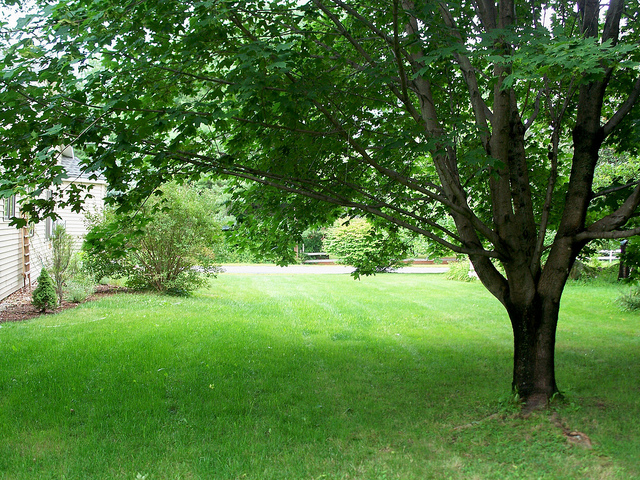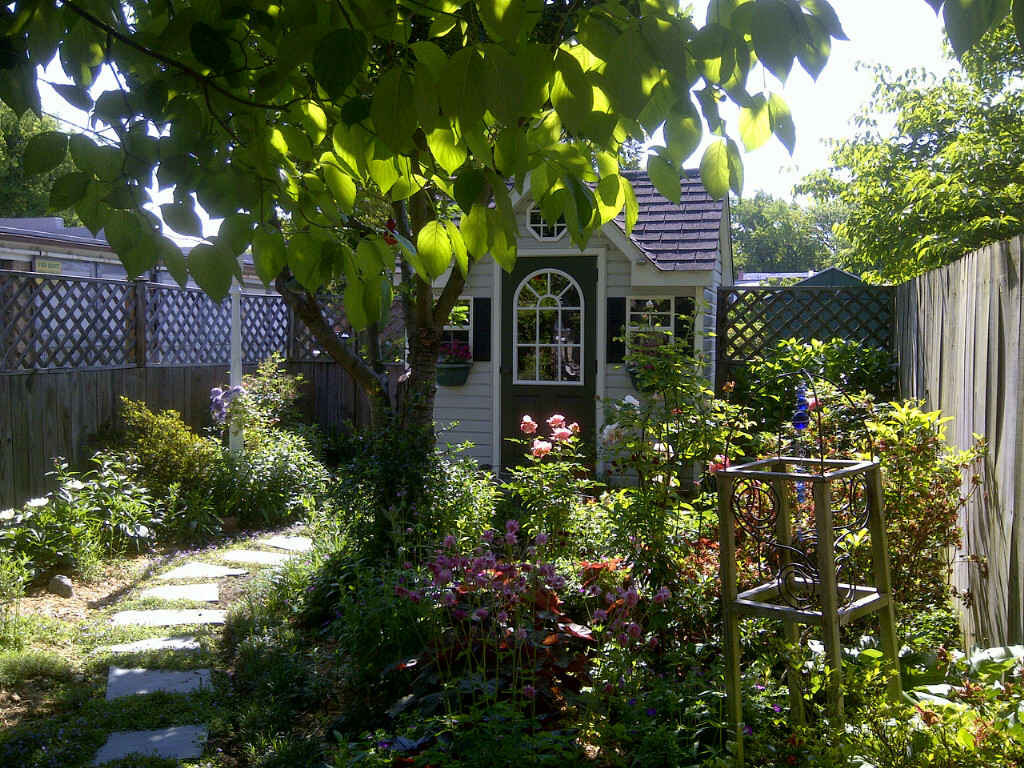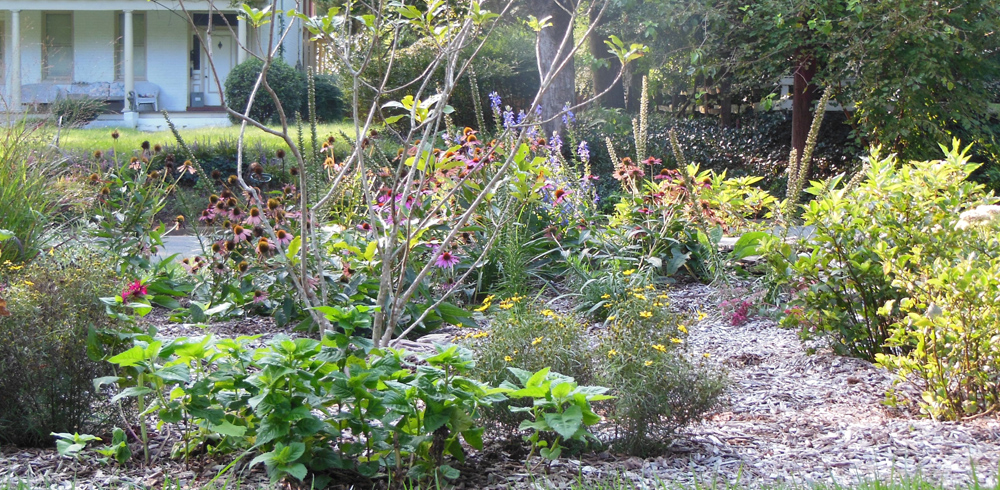A healthy James River doesn’t start at the edge of the water, but in our own backyards. Our decisions can help support and strengthen our local ecosystem and its inhabitants or hinder it. A healthy landscape that supports a variety of wildlife and reduces stormwater runoff usually has vertical layers, which aren’t typically seen in the residential landscape. Layers are beneficial because each layer provides a different service for specific critters and create a community of plants that support one another.
There are many ways to think about layers in the garden, but I will keep it simple and talk about the main 4 layers:
Tree layer: Not all gardens will have this layer, especially if you are going for more of a native meadow. It includes small trees like Dogwood or Redbud, or larger trees like Maple or Oak. They provide visual interest and can be a great focal point.
Shrub layer: Some good native shrubs include Viburnum, native Blueberry, and Oakleaf Hydrangea. This layer is often missing and can provide screening, create spaces in the garden, and many have attractive blooms or foliage.
Herbaceous layer: This layer includes non-woody vegetation like grasses and perennials that can provide great seasonal color. Some good native perennials include Woodland Phlox, Black-eyed Susan, and Goldenrod. Some good native grasses could include Switchgrass and Little Bluestem.
Mulch layer: This forms the blanket that maintains soil temperature, protects the soil from erosion, and brings everything together. As it decays it releases nutrients into the soil that support the surrounding plants. This could include leaving the leaves in your garden, hardwood mulch, or even better it could be a native groundcover such as Pennsylvania Sedge.

Poor Use of Layers: Typical yard with lawn and shade tree and lacking a diversity of layers.

Better Use of Layers: This home is on the right track with the leaf layer, trees, and shrubs, but is lacking strong shrub and herbaceous layer.

Best Use of Layers: This JRA River River Home has a variety of layers and provides great habitat. Notice the mulch layer is plants too.
TAKE ACTION: Take a look at your garden. What layers are you missing? February is a great time to start dreaming and planning for what changes you will implement in your garden this year and I challenge you to think about how you can bring more layers into your landscape to support a healthy James River. If you’re interested in doing more at home, consider becoming a River Hero Home.
More Thoughts on Layers!
- Claudia West and Thomas Rainer, co-authors of Planting a Post-Wild World: Designing Plant Communities for Resilient Landscapes, talk about layers in a different way and describe them as the structural layer, middle layer, and ground layer.
- Designing a Forest Garden: The Seven Layer Garden
- DGIF Habitat at Home

